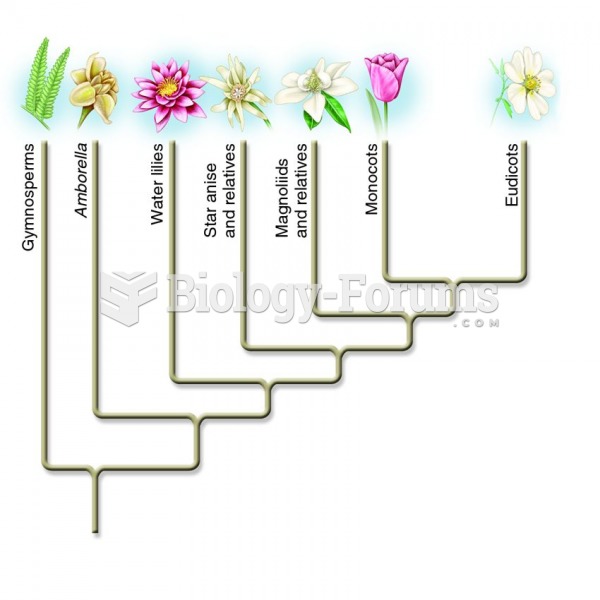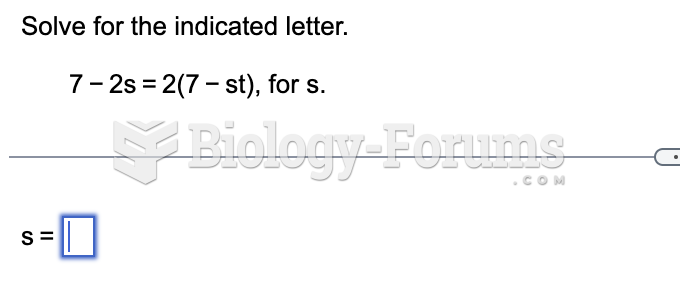Answer to Question 1
The dog originated about 12,000 to 14,000 years ago in Europe and Asia and was domesticated about
10,000 years ago. Many of our modern dogs probably descended directly from the wolf. These animals
roamed in packs and probably gradually found their way into human encampments. Humans found that
they could depend on the dog to warn of danger, and the dog depended more on humans for food and
shelter. Modern dogs evolved as a result of selective breeding for specific purposes and as a result of the
environment in which they lived.
The ancestor of the entire dog family is believed to have been a civet-like animal, Miacis, that lived 40 or
50 million years ago. Miacis was a small animal with an elongated body and was probably arboreal, or at least
seemed to have spent considerable time in the lush forests of its era. Next was the appearance, about 35 million
years ago, of two apparently direct descendants of Miacis. These were Daphaenus, a large, heavy-boned animal
with a long tail, and Hesperocyon, a small, slender animal that was the forerunner of the long-bodied, coyotelike
bear dogs that eventually evolved into modern bears. Hesperocyon can be considered the grandfather
of the dog family. Hesperocyon retained the long body and short legs of the primitive carnivores, but unlike
Miacis, Hesperocyon spent little of its time in the trees and began to hunt on the ground. Its claws were
retractile, enabling it to walk on the ground and climb trees.
From Hesperocyon there evolved two distinct dog types. The first, Temnocyon, was an important link in
the evolutionary chain that led to the modern hunting dog of Africa, the Cape hunting dog. The second,
Cynodesmus, is regarded as the ancestor of a large and diversified group of dogs that includes the modern
Eurasian wolf and the American dogs, foxes, and wolves.
The animal considered to be the father of modern dogs, Tomarctus, was directly descended from
Hesperocyon. Tomarctus had a body built for speed and endurance as well as for leaping, and differed little in
appearance from the modern dog. This was a hunter, an animal geared for the chase, that brought down prey
by way of slashing teeth. The modern dog still retains much of Tomarctus's anatomical structure and is surpassed
in speed only by the cheetah.
As the evolutionary progress of the Canidae family continued, the progeny of Tomarctus developed into
the modern dogs, wolves, fox, coyotes, fennecs, and jackals. At the same time, descendants of Temnocyon
gradually emerged as the Cape hunting dog of today.
Descending in a direct line from Tomarctus are four major lines of dogs: the herd dogs, the hounds and
terriers, the Northern and toy dogs, and the guard dogs. It is from these four lines, or groups, that modern
dogs are descended. Today, there are seven major groups and more than 400 breeds that have been developed
in the past 100 to 250 years.
Answer to Question 2
Horses, rabbits, and chickens are single-stomached animals.
The horse can consume large amounts of forage but is not considered a ruminant animal. It has a small,
single stomach, but unlike other single-stomached animals, it has a large cecum and colon located between
the small and large intestines. Bacterial action takes place in the cecum and allows the horse to digest
roughage material, but not as efficiently as a true ruminant animal. Horses do not have gallbladders. Bile is
secreted into the duodenum directly from the liver.
The rabbit's digestive system is very similar to that of the horse. It, too, has a large cecum that allows for
the utilization of high-quality roughage material; bacteria are present in the cecum and help break down
roughage.
Rabbits and rodents eat their feces. This is referred to as coprophagy and is usually done late at night or early
in the morning. Feces that are eaten are usually light green, soft, and have not been completely digested.
Birds, although considered single-stomached animals, have several different organs in their digestive
systems. Birds do not have teeth, so no chewing or breaking down of food material takes place in the mouth,
although saliva is added here to aid in swallowing. Food material passes down the esophagus, into the crop.
The next step is the proventriculus, where gastric acids and enzymes are secreted to begin chemical digestion.
The food material then passes to the ventriculus, commonly referred to as the gizzard. This is the largest organ
of the bird's digestive system. The primary purpose of the gizzard is to grind and crush food before it enters
the small intestine. The gizzard is composed of a horny, lined structure that is heavily muscled. Involuntary
muscular action serves to break up the food material, much like teeth action in other animals. Some birds,
those that consume seeds and whole grains, are often fed grit in the form of crushed granite, oyster shell, or
other insoluble material that aids in the grinding and breaking down of coarse material.
Food material then passes on to the small intestine. The first part of the small intestine is the duodenum,
where enzymes are secreted from the pancreas to help break down the proteins, starches, and fats. Bile is
secreted from the gallbladder to aid in the breakdown of fats. Most of the absorption takes place in the lower
section of the small intestine.
Birds have two pouches, called ceca, where the small intestine connects into the large intestine. Although
some bacteria are present in these pouches, very little digestion of the fiber is believed to occur here. Food
material passes from the small intestine into the large intestine and then into the cloaca. The cloaca serves as
a common junction for the bird's digestive, urinary, and reproductive systems.







